Travels with Grace: Florida, 1925 Part 3
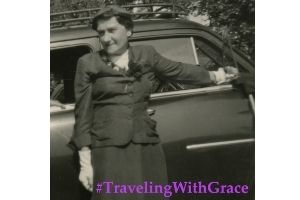
Welcome to this week’s segment of our 2019 #TravelTuesday series: Traveling with Grace. Today Grace continues her trip through Florida, exploring Palm Beach, St. Petersburg, and Tampa.
Palm Beach
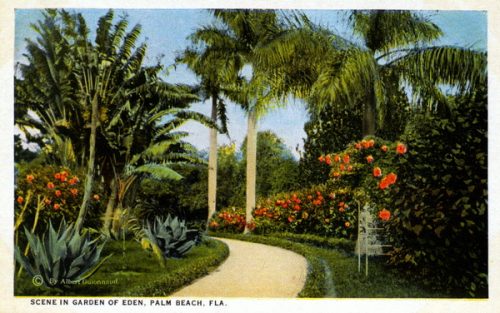
March 17, 1925: We took the bus for Palm Beach at 11 a.m. I was sorry to leave Miami with its gay throngs and pleasant excitement, its bright sunshine and balmy breezes. We arrived at West Palm Beach at 2 P.M. crossed to Palm Beach on the ferry and tool a rolling chair for a 2 hours’ ride along the N. Lake Trail. This was a beautiful ride on a smooth tree shaded path, the breeze blowing softly across Lake Worth on one side with its sumptuous yachts riding at anchor and on the other side magnificent gardens and jungle land. Our place belonging to Mrs. Cragins is called the Garden of Eden and contains hundreds of varieties of tropical plants, including rubber, cabbage rubber, royal poinciana, traveler’s palm which holds water in the stalks, different kinds of [crotons], silk and ribbon palms, to mention only a few that our [puslier?] pointed out to us.
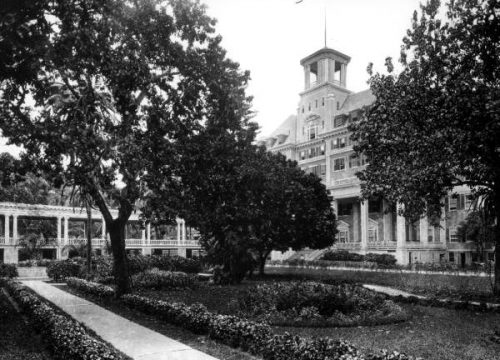
Then we went to the Hotel Royal Poinciana and had tea in the Coconut Grove. Here was a most pleasurable sight in watching the handsomely gowned men and women dancing on a glazed platform beneath the pals, sipping cool drinks and listening to a perfect orchestra, while the sun sank low in the lake and they lit the red lights in the grove. Then we returned to W.P.B. [West Palm Beach] and sat in the little park where men were pitching horse shoes and others played games at rows of tables. Took train for St. Petersburg at 8:30 P.M.
St. Petersburg
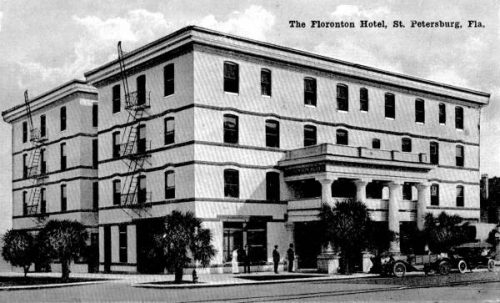
March 18, 1925: The train (Florida Northwestern) which carried us to St. P is on a new road and one of the best appointed on which I have ever ridden. We arrived here at 10 A.M. and came to the Floronton a nice quiet homelike hotel. This city seems quiet in contract to the cities we have just left on the east coast, though there are plenty of people, chiefly old folks, and the streets are loud with machines. This afternoon we took a limousine and rode out to the suburban towns of Pasadena and Jungle where Walter Hagen the golf champion lives. These are new developments rapidly building with wide well paved, well-lit and flowered bordered boulevards. We crossed the long bridge over Boca Siega Bay and drove around Passe-a-Grille which extends out into the Gulf of Mexico. There is a nice little beach here, fishing and bathing are the favorite pastimes. We saw many pelicans diving into the water and the beautiful blue and white herons are frequently seen in the marshes. There are many beautiful little palm dotted isles in the bay. Tonight, there was music in the hotel, then we took a walk and later saw the open-air movies from our room. We saw a very promising banana plantation near the hotel. The fruit is not large but has an excellent flavor and grows rapidly.
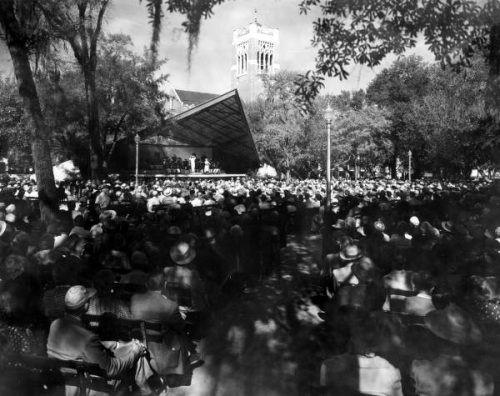
March 19, 1925: This afternoon we sat in William’s Park and heard the Highlanders play. I like their music. It is gay and sprightly. Here we met Mr. and Mrs. Weinberg of Atlantic City. The park is full of people who seem to live constantly in the open air here in St. Petersburg. For this reason, all of the sidewalks are lined with benches and chairs of every description which never go begging. This leads one to believe that St. P. is composed of tourists and leisure class exclusively. But they are also kind and friendly especially at this hotel (the Floronton) and I must add that the help here are of the nicest type with which I have yet met in Florida. We went around to see the new [Sersus?] Hotel, a very fine-looking structure situated in front of a park overlooking the bay and surrounded on the ground floor by pretty art shops. In the evening colored entertainers walk around the streets and stop in front of the various hotels to sing and play. The streets always present a lively appearance.
Tampa

March 20, 1925: This morning before we left St. Petersburg we had the first rain of our trip, a pouring drenching shower which abated just as we got ready to leave in the bus at 7 a.m. We crossed the Gandy Boulevard and Bridge, 6 miles long, a famous and truly remarkable engineering feat recently completed, where they have dreaded and made land inch by inch. In time they will fill in this entire section and we are told that all the land beneath this water has already been sold. We entered Tampa by way of the Memorial Highway marked by a granite shaft inscribed to the soldier dead and came to the Tampa Bay Hotel. After lunch we hired a car and rode along the beautiful Bay Shore Drive with its sea wall on one side and costly [raised?] [unreadable?] on the other, and there a new suburb where stucco bungalows of the Spanish type predominate.

Then on thru the business section of the city which appears to be quite an industrial center, here are many dry goods shops and Mass’ is a fine department store. Then we rode thru Ybor City formerly a separate township, where live many Cubans and Italians and here is a decidedly foreign air along the narrow street where at [?] one catches a whiff of tobacco [?] from the nearby cigar factories [unreadable?] – Tampa is the largest, or the scent of coffee roasting, and we stopped at one of the coffee shops to taste it prepared in the Cuban way.

March 21-22, 1925: Last night there was a gay throng at this hotel when 250 schoolteachers, mostly young women, held a banquet here. They looked very pretty and had a good time singing and speech-making. This hotel was built by Henry Bradley Plant, 1st president of the Seaboard Airline and originally the train pulled right up to the door. It is built in Moorish design, wide spreading with enormous high ceilings and rooms filled with a great array of curios, porcelains, bronzes, marbles, crystal mirrors, paintings and all manner of antiques. Although Mrs. Plant is said to have removed 15 carloads of furnishings at her husband’s death, when the property was turned over to the city, there is still ample material for a good-sized museum.
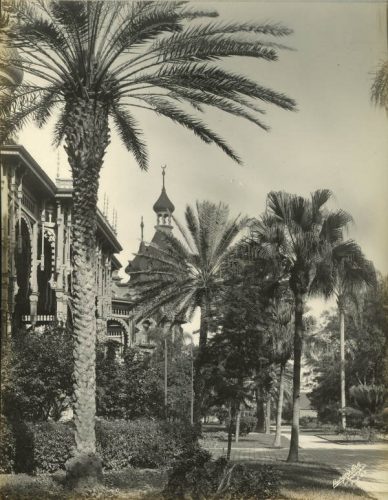
It is situated in the middle of Plant Park surrounded by spacious verandahs and beautiful shade trees and flowering bushes. Provisions are made for various games including tennis, croquet, horseshoe pitching, etc. and there is also a children’s playground. A good band plays in the park twice daily. There is a pair of beautiful peacocks on the grounds and the birds sing everywhere. Their voices are the first we hear in the morning. The Hillsboro River runs thru the foot of the park and this stream, which is navigable, empties into Tampa Bay. There is a fine orchestra of 8 men at the hotel and they have concerts mornings and evenings. Last night there was a dance in the very attractive ball-room. The food here is most excellent and abundant and it is an ideal place to rest. The city of Tampa is the 2nd in size in Florida, numbering 100,000 inhabitants, but unlike most Florida cities the population does not manifest itself on the streets but rather attends strictly to business. The cigar workers, [—fly] Cubans and Haitian, are said to work but two- or three-days week, beginning at day break, stopping an hour or so for breakfast and lunch and stopping shortly afternoon noon, but the entire family, father mother, and children work. It has been very warm here, around 78 degrees but today is cooler.
~No further entries for the 1925 Florida trip.~
This is the final entry for 1925 in Grace’s journal. Next week we pick up with the final entry in this particular diary – October 1926: The Philadelphia Sesquesentennial Exposition!
Thanks for reading “Traveling with Grace,” a series where we’re sharing (and annotating) posts from the travel diaries of Grace Amelia Hecht, native Baltimorean, b. 1897 and d. 1955. As mentioned in my introductory post transcription errors sometimes occur and I’ve made my best guesses where possible, denoted by [brackets]. – Rachel Kassman, marketing manager
